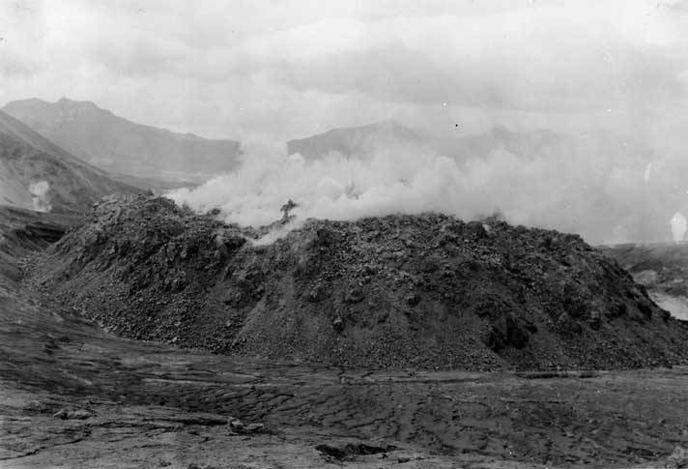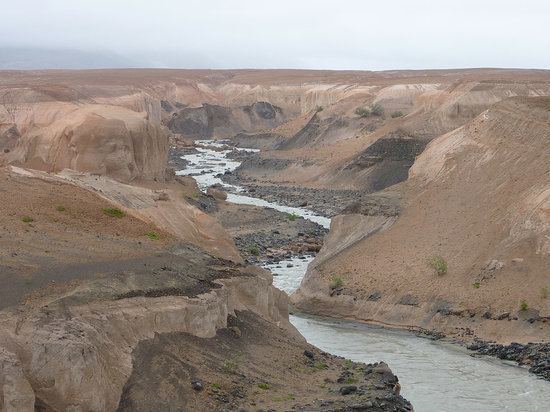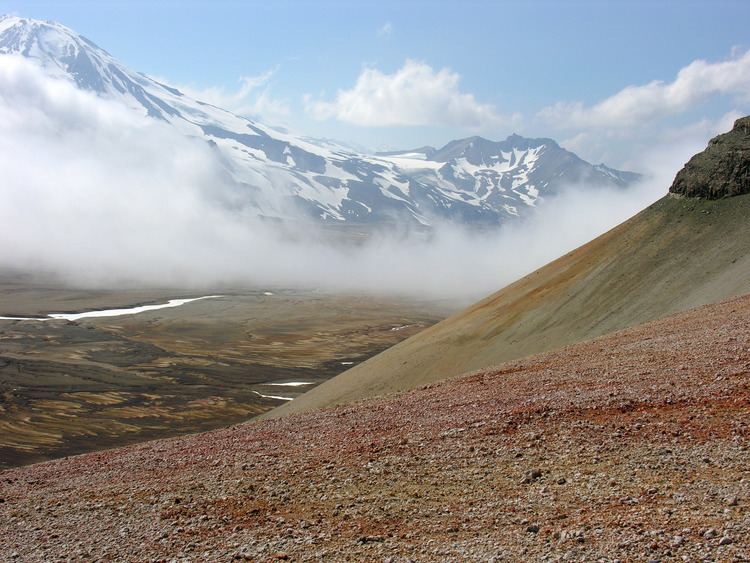 | ||
Valley of ten thousand smokes
The Valley of Ten Thousand Smokes is a valley within Katmai National Park and Preserve in Alaska which is filled with ash flow from the eruption of Novarupta on June 6–8, 1912. Following the eruption, thousands of fumaroles vented steam from the ash. Robert F. Griggs, who explored the volcano's aftermath for the National Geographic Society in 1916, gave the valley its name, saying that "the whole valley as far as the eye could reach was full of hundreds, no thousands—literally, tens of thousands—of smokes curling up from its fissured floor."

The 1912 eruption was the largest eruption by volume in the 20th century, erupting about 13 cubic kilometers (3.1 cu mi) of material. Novarupta generated as many as 14 major earthquakes with magnitudes between M6 and M7, a level of energy release virtually unprecedented during volcanic eruptions in modern memory, and over 100 earthquakes greater than M5. Following the eruption, the summit of Mount Katmai subsided (collapsed) about 1,200 meters (3,900 ft), forming the central caldera.

Katmai is a stratovolcano, formed from alternating layers of lava flows and pyroclastic rocks. The presence of pyroclastic materials indicates that some Katmai eruptions have been explosive. The subsidence of the summit to form the central caldera and the extraordinarily energetic earthquakes accompanying the 1912 eruption are evidence of this.

The ash-filled valley covers a 40-square-mile (100 km2) area and is up to 700 feet (210 m) deep. In places deep canyons have been cut by the River Lethe, allowing observers to see the ash flow strata. Since the ash has cooled, most of the fumaroles are now extinct and despite its name the valley is no longer filled with 'smoke' (i.e. steam). The signs of volcanic activity are still visible on nearby hills. Katmai's most recent eruption was in 1927, but there have been non-eruptive events as recent as 2003. The Alaska Volcano Observatory still monitors Katmai's activity as part of the Katmai Cluster, where there are 5 active stratovolcanos within 15 kilometers (9 mi) of Katmai.

Visitors to the valley most commonly arrive via bus along the 20-mile (32 km) road from Brooks Camp, which is the only road in Katmai Park. The valley is a source of creative exploration by photographers and naturalists.

